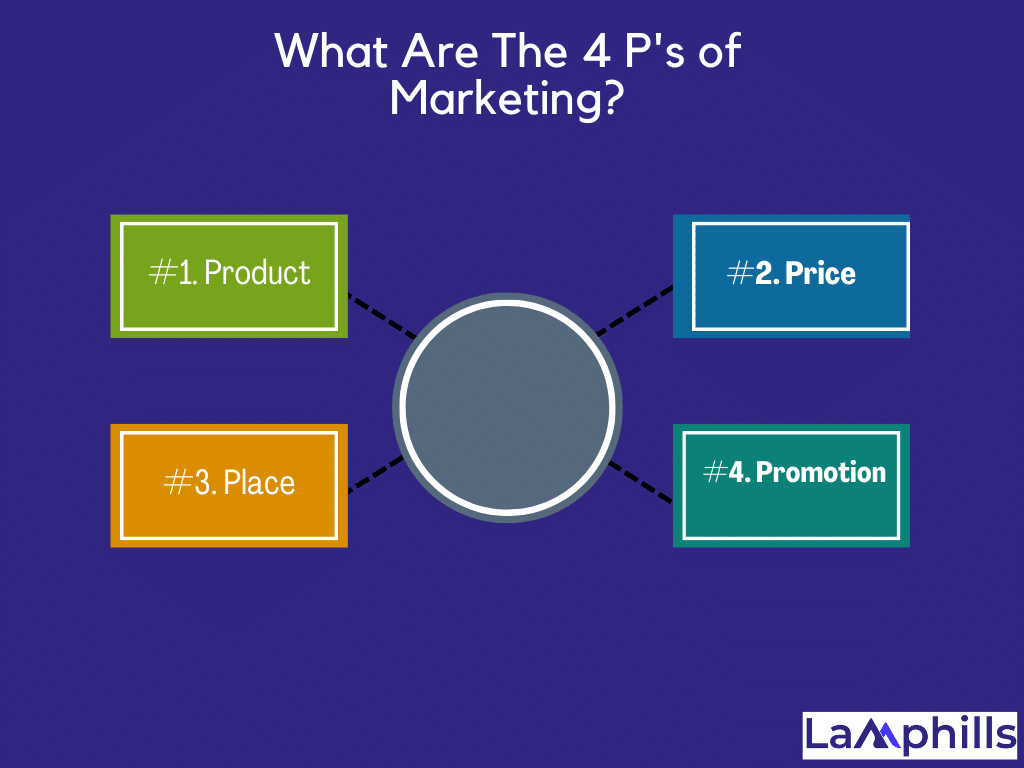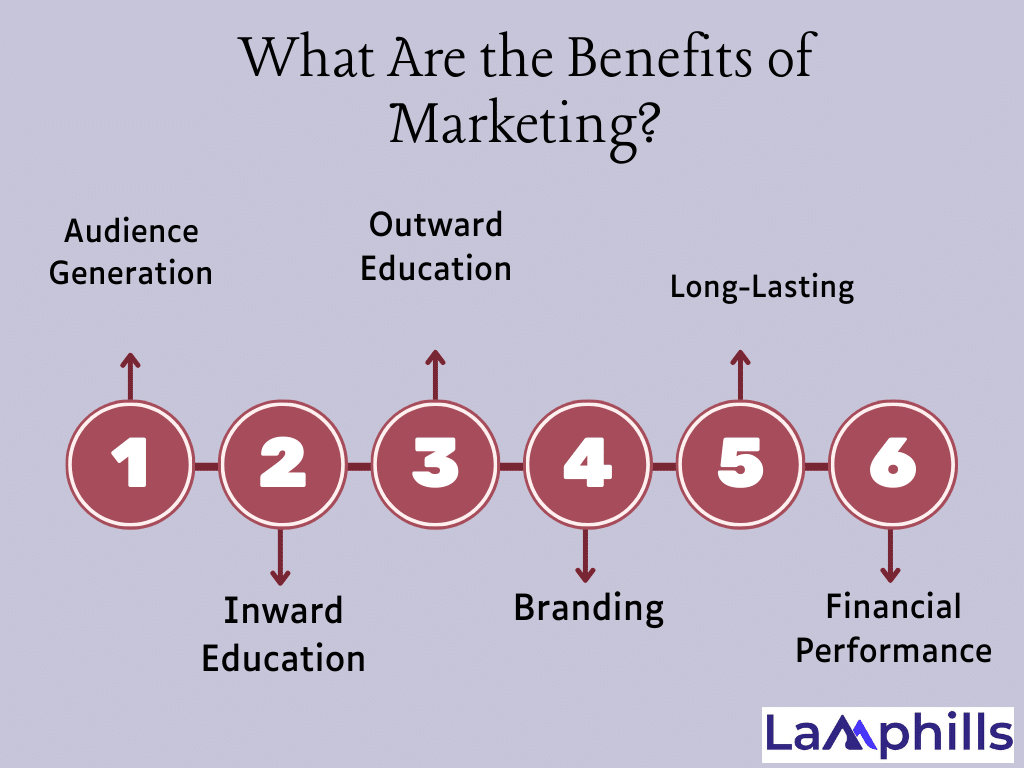Marketing experts use a variety of methods to connect with prospective clients about their products and services. These channels comprise a wide range of strategies, such as distribution methods and modalities of communication. This means if you work in marketing, having a better understanding of these channels can help you advance your career. As someone who has spent years working in content marketing, I’ve witnessed how to apply them. In this article, I’ll walk you through the numerous types of marketing that organizations can incorporate into their marketing strategies.
Key Takeaways
- Understanding and utilizing the full spectrum of marketing types, from classic methods like direct selling to modern digital strategies like SEO and social media marketing, is crucial for successful business promotion.
- The Four Ps of marketing—product, price, place, and promotion—are foundational – These elements shape how businesses approach marketing, from product development to positioning it in the market, ensuring a holistic and effective strategy.
- Tailoring your marketing approach to the preferences and behaviors of your target audience is vital. This is achieved through market research, demographic analysis, and leveraging tools like SEO and social media for targeted reach.
- Personalized marketing and word-of-mouth are powerful trust-builders – Crafting experiences that feel personalized for customers or fostering organic word-of-mouth recommendations can significantly enhance brand loyalty and increase conversions.
What Is Marketing?

Marketing refers to a company’s efforts to promote the purchase or sale of its products or services. Marketing involves advertising, which enables firms to offer products and services to consumers, other businesses, and organizations.
Professionals in a corporation’s marketing and promotion divisions use advertising to reach out to key potential audiences. Promotions are tailored to specific demographics and may include celebrity endorsements, snappy phrases or slogans, memorable packaging or graphic designs, and extensive media coverage.
What Are The 4 P’s of Marketing?

Product, pricing, location, and promotion are the Four Ps of marketing. The Four Ps form a firm’s key combination to market a product or service. Neil Borden pioneered the marketing mix and the Four Ps in the 1950s.
#1. Product
A product is an item or goods that a business intends to offer to clients. The product should aim to fill a gap in the market or meet consumer demand for more of an already available product. Before they can develop a suitable campaign, marketers must understand what product is being marketed, how it stands out from its competitors, whether a product can also be paired with a secondary product or product line, and whether there are substitute products in the market.
#2. Price
This checklist below offers a clear framework to help you evaluate and optimize the essential components of your marketing mix.
Price relates to how much the corporation will charge for the product. When setting a pricing, businesses must consider the unit cost, marketing expenditures, and distribution fees. Companies must also examine the prices of competing products in the marketplace, as well as whether their projected price point is sufficient to constitute a viable alternative for consumers.
#3. Place
The term “place” relates to the distribution of the commodity. Key factors include whether the product will be sold in a physical store, online, or across both distribution channels. How much physical product placement does it get when sold in a storefront? When it is sold online, what kind of digital product placement is provided?
#4. Promotion
Promotion, the fourth P, is the integrated marketing communications campaign. Its includes a variety of activities such as advertising, selling, sales promotions, public relations, direct marketing, sponsorship, and guerrilla marketing.
Promotions vary depending on what stage of the product life cycle the product is in. Marketers understand that consumers associate a product’s price and distribution with its quality, and they take this into account when devising the overall marketing strategy.
How do you choose a marketing channel?
First, it’s important to perform market research and demographic analysis. Learning more about what matters to your target customers and how they spend their time may help you choose the right channel to reach them.
Types Of Marketing
There are many different types of strategies that marketing teams use to communicate the benefits of their product or service to the public. But what strategy is the best one? Below are different types of marketing strategies to try in your next marketing plan.
#1. Email Marketing

Email marketing is a medium used to deliver promotional emails to a specified audience with a specific message. A marketing email could contain information about an impending sale, a new product release, or modifications to an existing product. Email marketing enables businesses to give customized content across several email messages, creating new chances for marketing experts.
Email marketing requires you to acquire individuals to subscribe to your emails, which may take some time if you haven’t previously started building your list. However, once you have subscribers, you can send them all kinds of emails and drip campaigns, like new product releases, abandoned cart reminders, and even newsletters to help them through the funnel. Before you start building out your emails, learn about the customer journey for email marketing to discover how automation can help you increase sales.
#2. Search Engine Optimization (SEO)
Search engine optimization refers to the results a potential customer sees when searching for something online. As a marketing channel, optimizing the search engine results page can lead to higher traffic to your company’s website. There are a variety of strategies related to SEO marketing, and the specific strategy you implement depends on your target audience, your product and your sales goals.

When I first dipped my toes into social media marketing, I was managing a small business page on Facebook. We tried various strategies, from simple posts to paid ads. What surprised me was how engaged the community became once we started posting behind-the-scenes content. Sharing the story behind the brand brought authenticity, and that resonated with our audience.
Social media marketing entails using social media platforms to promote your business, interact with your target audience, and increase brand awareness. Businesses can reach out to a wide and targeted audience by sharing content, engaging with followers, and running advertisements. Social media marketing can be classified into two types: organic (unpaid) and paid marketing.
#4. Content Marketing

Content marketing allows organizations to offer valuable and relevant material to attract a specific audience to their brand. Instead of directly marketing a product or service to potential customers, content marketing seeks to deliver helpful knowledge to foster trust, develop industry authority, and, eventually, drive behaviors such as purchasing.
#5. Digital Ads

Digital advertising uses static images, audio, or video to reach a target audience and promote a product or service. Display ads can be placed on websites, social media platforms, search engines, mobile apps, video streaming sites, and email platforms. This marketing channel is widely used and highly effective, as you can target a specific audience, measure results, and quickly adapt using performance data, allowing businesses to improve underperforming ads.
#6. Affiliate Marketing

Affiliate marketing is a performance-based marketing method in which affiliates promote your items and receive a commission for each sale they make. It’s an affordable method to broaden your audience.
I previously helped a small e-commerce company set up an affiliate program. We collaborated with a few bloggers who consistently promoted products in our area. Their posts, combined with unique affiliate connections, allowed us to reach new audiences with no upfront costs. It was a win-win arrangement because they received commissions while we attracted new consumers.
To make affiliate marketing effective, begin by developing a strong incentive system for your affiliates. Provide them with all of the materials they need—banners, photos, and content—and encourage them to share their personal experiences with your products.
#7. Direct Selling

Direct selling is a marketing strategy in which a professional engages directly with prospective customers. This form of engagement is typically done one-on-one and is most beneficial for small enterprises. Direct selling frequently includes marketing to people you know. This marketing channel usually provides reduced costs for the company because there is no need to pay for advertising space, distribution charges, or other marketing materials. Because of these lower costs, a successful product sale might result in a larger overall profit.
#8. Network Marketing

Network marketing, like direct selling, is a channel in which sellers sell through their networks. For example, people may promote a product on their personal social media accounts to inform their family and friends about it. This marketing channel is focused on informing people about the product and making a sale directly to them through information, photos, or your testimony of the product’s utility.
#9. Digital Marketing

When I first started freelancing as a digital marketer, I quickly saw how adaptable and dynamic digital methods can be. In just two months, I assisted a startup in increasing their lead production by more than 40% through PPC marketing. Digital marketing is more than just running ads; it’s about targeting the correct audience, tracking every click, and optimizing in real-time.
To effectively exploit digital marketing, you must first establish a solid foundation in SEO—that is, optimizing your website so that search engines such as Google can readily find it. Combining this with email marketing and social media outreach helps you build relationships with leads and drive constant traffic. Unlike traditional marketing, digital marketing uses a wide range of previously inaccessible technology to reach people in new ways.
This is the fastest-growing type of marketing, encompassing all marketing efforts that live online. Businesses investing in digital marketing, such as ProfileTree, use numerous digital channels, such as search engines, social media, email, websites, and more, to connect with their current and prospective customers.
#10. Value-Added Resale Marketing

A value-added resale (VAR) marketing channel entails collaborating with resellers who can buy a product and add value to it before reselling it to a specific audience. For example, if a company sells bespoke bookshelves, it may buy prefabricated bookshelves from a wholesaler before rebuilding each unit to match a customer’s specifications. By adding value to the original product, the corporation may position its products as distinctive, valuable, and attractive to customers. This channel assists businesses by broadening their reach, opening up new markets, and leveraging the reseller’s experience to provide more specialized solutions to clients.
#11. Outbound Marketing
Outbound marketing includes unsolicited, outbound promotions such as cold phoning, email blasts to purchased lists, and print advertisements. This marketing approach is known as “outbound” since it entails sending a message to consumers to raise knowledge of your products or services, regardless of whether they have expressed interest in them. Outbound marketing has become less effective in many industries, as customers are now bombarded with so many marketing interruptions that they must pay closer attention to these messages.
#12. Inbound Marketing

This marketing, however, is focused on attracting customers rather than interrupting them. Inbound leads are both more likely to convert and less expensive to acquire, with one recent report finding that inbound leads cost 67% less than outbound ones do.
While some inbound marketing tactics live offline, the majority fall under the umbrella of digital marketing, as consumers are empowered to do research online to help them progress through their buyer’s journeys. Inbound is built on three pillars: Attract, engage, and delight. The initial goal is to create valuable content and experiences that resonate with your audience and attract them to your business.
The next step is to engage them through conversational tools like email marketing, chatbots, and, of course, continuously adding real value. Finally, delight them by acting as a long-term, empathetic advisor and expert.
#12. Influencer Marketing

Influencer marketing is a form of marketing that enables businesses to collaborate with individuals who have a following for increased brand exposure. Companies may ask a person with a large following to publish social media content that promotes their products or services.
Factors to consider include their niche, the size of their audience, and their current metrics. From there, you can find influencers and reach out to them by:
- Manually reaching out on social media.
- Using an influencer marketing platform.
- Hiring an agency to do the research and outreach for you.
- Look for influencers who genuinely align with your brand values. Micro-influencers (those with 10,000 to 50,000 followers) often have highly engaged audiences and can drive meaningful results without breaking your budget.
#13. Personalized Marketing

Personalized marketing seeks to provide a tailored marketing experience for each user throughout your business. This might be as basic as including a user’s name in an email’s subject line or providing product recommendations based on previous purchases.
To be true, this type of marketing might easily come across as creepy unintentionally. However, studies show that consumers are surprisingly open to tailored experiences, particularly when they improve convenience and make the shopping transaction more joyful.
#14. Brand Marketing

Brand marketing includes everything you do to shape your brand’s public impression and establish an emotional connection with your target audience. This encompasses storytelling, creativity, humour, and inspiration. The idea is to be thought-provoking and spark good conversations so that your brand is remembered and connected with pleasant emotions.
To begin brand marketing, you must first understand your buyer persona and what appeals to them. You must also analyze your position in the industry and what makes you different from your competitors. This can help shape your values and what you stand for, giving you crucial fodder for your storytelling campaigns.
#15. Word-of-Mouth Marketing

Whose opinion do you value more: your friend’s or a brand’s? The solution is obvious. That explains why word-of-mouth marketing is so effective. According to a recent Nielsen survey, 92% of customers trust referrals from friends and family over any sort of promotion.
Of course, you can’t make it happen, but you can position your brand to increase the likelihood. For example, the following tactics can help satisfied customers spread the word about your brand:
- Creating shareable, viral-worthy content.
- Offering referral and loyalty programs.
- Requesting reviews after providing a product or service.
What Are the Benefits of Marketing?

Well-defined marketing strategies can benefit a company in several ways. It may be challenging to develop the right strategy or execute the plan; when done well, marketing can yield the following results:
#1. Audience Generation
Marketing enables a corporation to target those who it believes would benefit from its product or service. Sometimes people are aware that they have a need. They don’t always realize it. Marketing allows a company to connect with a group of people that suit the demographic that it wants to serve.
#2: Inward Education
Marketing is useful for gathering information that will be handled internally to drive success. Consider market data that reveals that a specific product is most commonly purchased by women aged 18 to 34. Collecting this data allows a company to better understand how to appeal to this population, generate sales, and use resources more efficiently.
#3. Outward Education
Marketing can also be used to inform the world about what your company does, what items you sell, and how your firm can improve the lives of others. Campaigns can be instructive, explaining why people outside of your firm need your product. Furthermore, marketing efforts allow a firm to identify itself, its history, its owners, and the reasons behind its existence.
#4. Branding
Marketing enables a corporation to take an offensive approach to building a brand. Instead of letting a consumer’s interactions shape their opinion of a company, a corporation can engage a customer ahead of time with specialized content or media to elicit specific feelings or reactions. This enables a corporation to shape its image before customers has ever interacted with its products.
#5. Long-Lasting
Marketing campaigns done right can have a long-lasting impact on customers. Consider Poppin’ Fresh, also known as the Pillsbury Doughboy. First appearing in 1965, the mascot has helped create a long-lasting, warm, friendly brand for Pillsbury.3
#6. Financial Performance
The ultimate purpose and advantage of marketing is to increase sales. Customers are more inclined to engage in sales when their relationships are solid, well-defined, and good. When marketing is done well, customers gravitate toward your firm, giving you a competitive advantage over your competition. Even if the items are identical, marketing can provide the competitive advantage that leads a client to choose you over someone else.
What is Multi-Channel Marketing?
Multi-channel marketing refers to the various marketing methods you utilize to promote your firm. You might wish to run television commercials and market your business on social media, sending potential buyers to your website.
What Are the 5 C’s of Marketing?
The 5 C’s are company, customers, competitors, collaborators, and climate.
How Important is Content Creation in Marketing Today?
As important as technical proficiency is when it comes to digital marketing, Rogers added that content also plays a crucial role and marketers with proven skills in content creation should be well-positioned to thrive in the profession.
Conclusion
There is no single marketing plan that works for all firms. The best way is to mix and match different methods of marketing depending on your objectives and target demographic. Over the years, I’ve seen that the true magic emerges when techniques are combined—for example, mixing traditional marketing with digital efforts or combining influencer marketing with content marketing.
By experimenting with different marketing methods and regularly assessing your results, you’ll be able to identify the optimal combination that generates business success. Remember that marketing is as much about connection as it is about conversion—so keep your audience at the center of every plan you implement.






